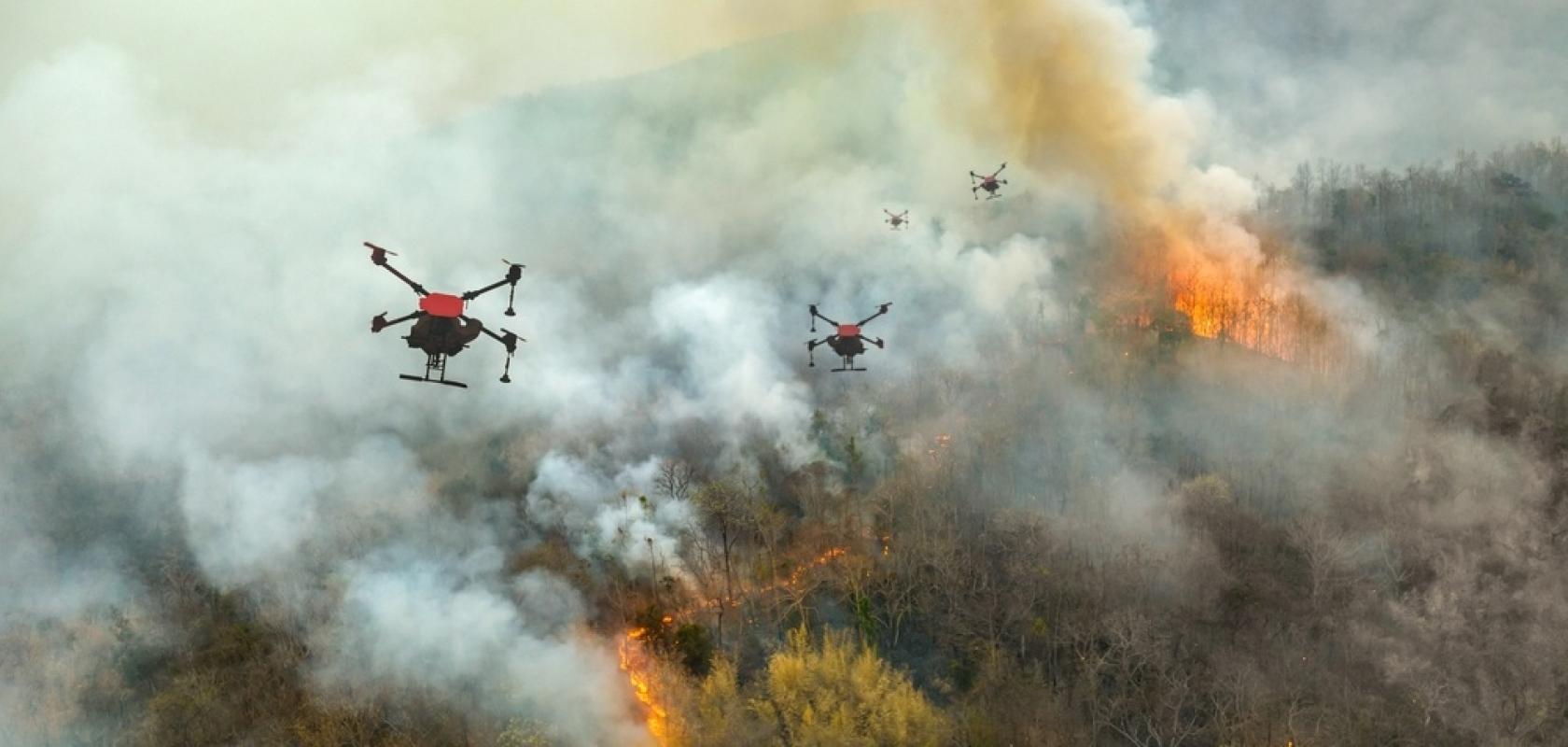Swarms of drones are being used in the UK to detect and tackle wildfires much earlier than is currently possible, as part of an effort to develop cost-effective early mitigation strategies for wildfires.
Using AI technology from the University of Sheffield – which incorporates thermal and optical imaging – the drones can automatically detect and investigate fires, and then self-coordinate to deploy fire retardant onto the fire, monitor the situation and return to base.
In August, the team worked with local fire and rescue services to trial the system in Cornwall.
Using drones from Windracers and swarm technology developed by University of Bristol, the week-long trial tested the autonomous fire detection and swarm capabilities.
Windracers’ Ultra self-flying cargo aircraft are each able to carry 100kg of fire retardant. They can fly autonomously in a search pattern to monitor danger areas over the summer months, with a swarm of drones potentially covering areas the size of Greece. The test included one Ultra aircraft, along with three smaller drones.
The trial saw the technology successfully identify and approach a number of small, controlled fires – which were monitored closely by fire and rescue services.
Thermal imaging aids developments of autonomous fire detection
The successful trial was the culmination of four years of research and development as part of the Innovate UK funded project ‘Protecting Environments with Swarms of UAVs’.
To help develop autonomous fire detection and firefighting software for the autonomous aerial platforms, University of Sheffield researchers worked with the Lancashire Fire and Rescue Services, who recorded different videos of fire events.
In most cases, the fire service used a DJI M300 RTK drone equipped with a Zenmuse H20T thermal camera, which includes an nncooled VOx microbolometer sensor, a 13.5mm focal length and a 10.6 degree display field of view.
The videos were not embedded with any temperature data and serve purely as a visual means of identifying fire from the environment. “The rationale behind this is that the thermal camera serves as a very selective filter and allows only sufficiently hot areas to appear as high intensity regions in the image, thus alleviating the shortcomings of colour-based fire detection models which are susceptible to false-positives,” the researchers said.
The thermal videos enabled the development of fast and lightweight detection models that can operate using only simple image processing and morphological techniques, which allow for fast real-time detection and localisation.
Making robots easy to operate
The University of Bristol's swarming technology was another crucial element in the project, which involved working with Distributed Avionics on digital twinning, whereby real-time data and modeling techniques are used to mirror physical counterparts in a virtual world.
“Finding and tackling wildfires before they become a problem requires many robots to work together as a swarm,” comments Sabine Hauert, Professor of Swarm Engineering at University of Bristol. “We’ve spoken to firefighters around the world to design a swarm that is useful and easy for them to operate. It was great to see this technology being tested for the first time.”
The trial marks a key milestone in the development of wildfire prevention technology which could be deployed by firefighters in the coming years pending regulatory approval.
Credit for main image: Toa55/Shutterstock


